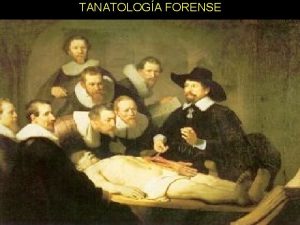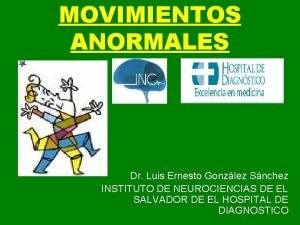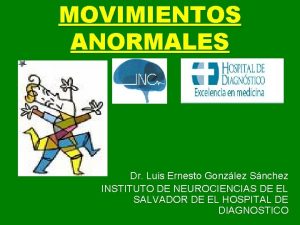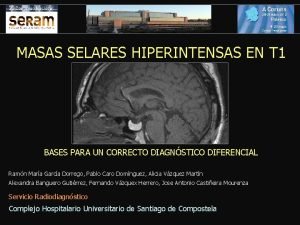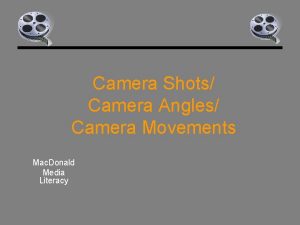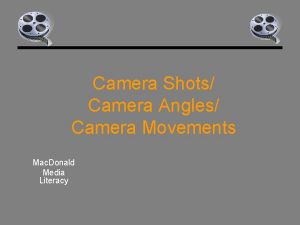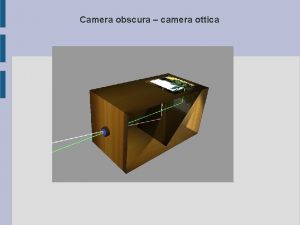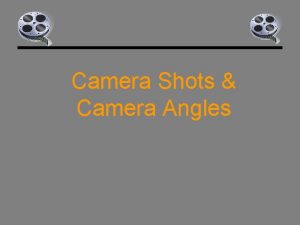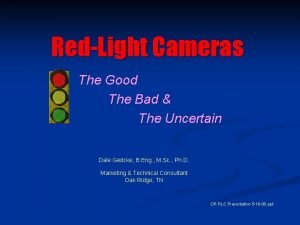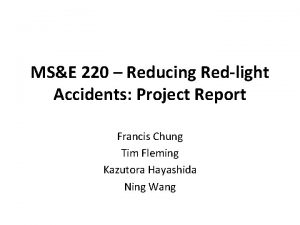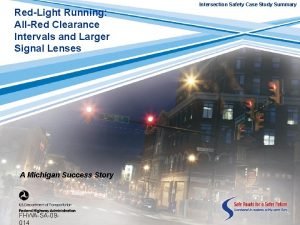WILLIS TEXAS RedLight Safety Camera Program The RedLight






















- Slides: 22

WILLIS, TEXAS Red-Light Safety Camera Program

The Red-Light Running Problem: • Traffic crashes are among the most significant causes of preventable death and injury in North America. • Red-light running is a serious problem in Texas. • In 2012, according to the National Highway and Traffic Safety Administration, 82 Texans were killed and thousands more were injured in red-light running related collisions, making Texas the third deadliest state for red-light running fatalities.

The Red-Light Running Problem: • Public costs exceed $14 billion per year, and more than half of the deaths in red-light running crashes are people other than the motorist. • There is no doubt that red-light runners are dangerous drivers who irresponsibly put others at risk. In America's cities, the yellow light has come to symbolize “hurry up” instead of “slow down. ” • Running red lights or other traffic controls is the most common cause of all urban crashes.

The Red-Light Running Problem: • Most Americans (96 percent) are afraid of being hit by a red-light runner, but nearly one in five admit to running a red light in the last ten intersections. • The leading excuse given for red-light running was neither frustration nor road rage; it was “being in a hurry. ”

The Red-Light Running Problem: • Nationally, more than 600 communities in more than 25 states have implemented road safety programs. • Road safety programs provide law enforcement agencies a sound solution to monitor dangerous intersections and to use their limited resources to efficiently tackle crime. • And by changing driver behavior we see fewer violations, fewer collisions, fewer injuries and fewer fatalities.

Research: • Documented evidence of photo enforcement's safety benefits has been recorded in the U. S and around the world, reinforced by new reports and studies showing that red-light safety cameras lead to significant decreases in intersection violations and crashes. • As a supplement to traditional law enforcement, red-light safety cameras can bring about behavior changes resulting in more motorists obeying traffic signals and avoiding the crashes, injuries and loss of life caused by red-light running.

Research: • Data from other cities across the country and multiple research studies have proven that red-light safety cameras decrease crashes – in particular, the numbers of side or T-bone crashes which cause the most fatalities and serious injuries. • The Texas Transportation Institute found red-light related crashes decreased by 25 percent at intersections in Texas with red-light safety cameras. • The 2011 TTI study also states right-angle crashes —the most life-threatening type of red-light running collisions—decreased by 32% at intersections with red-light safety cameras.

Nationally, according to the Insurance Institute for Highway Safety: • Red-light safety cameras saved 159 lives in 2004 -08 in 14 of the biggest US cities, a new analysis by the Insurance Institute for Highway Safety shows. • Had cameras been operating during that period in all large cities, a total of 815 deaths would have been prevented. • More than half of the people that die in red light crashes are people other than the violator. • The researchers found that in the 14 cities that had cameras during 2004 -08, the combined per capita rate of fatal red-light running crashes fell 35 percent, compared with 1992 -96.

How the system works: A single Axsis™ RLC-300 Red-Light Safety Camera captures two high-resolution images from the rear of the vehicle using a 16 megapixel camera. The first image shows the vehicle with the front wheels behind the stop bar and the illuminated red light, and the second image shows the vehicle in the intersection with the rear wheels past the stop bar and an illuminated red light. These two images contain all the information needed to prosecute a red-light violation, including a clear image of the license plate, extracted from one of the actual violation images—only our single camera system can extract a plate from the completion photo if the initial plate is blocked.

How the system works:

Willis Road Safety Camera Program: What’s happened since the cameras went live? • Red-light safety cameras are utilized at three approaches at two intersections within the city. • The technology became operational in March 2010. • 78% of the red-light running violations captured by the road safety program have been issued to vehicles registered outside of Willis.

This graphic tracks the change over time in the total number of red-light running citations issued per month by the Willis program. As violations decrease, the opportunity for dangerous red-light running related crashes drops, contributing to safer traveling throughout the city. Program data shows a 46% reduction from program inception (first full month of data) through October 2014.

Since program inception, the average number of red-light running violations per camera per day has decreased by 36 percent.

Most red-light runners in Willis do not get a second ticket. The community’s recidivism rate is 8%, which means 92% of all violators who receive and pay a ticket do not violate again. This low rate of repeat behavior, tracked from program inception through October 2014, indicates a positive change in driver behavior to stop on red.

When is red-light running happening in Willis? When looking at total violations by time of day, the most dangerous hours for red-light running is 12 p. m. through 2 p. m. 30 percent of violations occurred before noon and 70 percent of violations occurred after noon.

When is red-light running happening in Willis? When looking at the total number of violations by day of the week, the day with the most violations is Saturday, accounting for 17 percent of all violations. The weekdays accounts for 68 percent of total violations.

Willis Road Safety Camera Program Benefits The revenue generated from the Red-Light Safety Camera Program is funding City programs designed to make the community a safer place for motorists, pedestrians and cyclists. In accordance with the Texas Transportation Code, 50% of a local authority's remaining red-light safety camera fund revenue after expenses goes to local trauma centers, and the remainder may be used to fund traffic safety programs, including pedestrian safety programs, public safety programs, intersection improvements and traffic enforcement

Willis Road Safety Camera Program Benefits The value of Willis’s Red-Light Safety Camera Program extends beyond public traffic safety. Red-light safety camera video footage is available to police investigators to help with accident scene reconstruction or to assist in an ongoing criminal investigation, for example. Using video in this way can help reduce police operating costs, and provide a cost-savings benefit to taxpayers. Since program inception, the police have requested videos on 28 occasions.

The Information bar above the image displays the Date/ Time and location, as well as the duration of the amber signal, the speed of the violation vehicle, the traffic light Phase, duration in seconds of how long the light has been red, and the travel lane of the vehicle.

First rear image: The “A” shot is captured from the rear approach showing: the scene of the violation including the back of the violating vehicle in front of the violation line; one or more visible red light signals; and a clear image of the license plate of the offending vehicle, all from the single, base image.

Second rear image: The “B” shot is also captured from the rear approach showing: the scene of the violation including the back of the violating vehicle after the rear axle has crossed the stop line and the vehicle has illegally entered the intersection; one or more visible red light signals; and a clear image of the license plate of the offending vehicle, all from the single, base image.

License plate crop: For the court and police department this is the most significant technological innovation in photo enforcement. The Axsis™ Violation Processing System will create a magnified “crop” of the license plate from one of the images for easy viewing. The cropped license plate close-up is not a separate image, but rather a close-up view of the original violation image. This image can be taken from either of the two images captured.
 Multicamera productions
Multicamera productions Camera moves
Camera moves Neurologie
Neurologie Willis poligonu
Willis poligonu Bruce willis
Bruce willis Artera comunicanta anterioara
Artera comunicanta anterioara Wild ocean enterprise
Wild ocean enterprise Willis stifinder
Willis stifinder Dede willis
Dede willis Bailey willis theory philippines
Bailey willis theory philippines Dr angela willis
Dr angela willis Poligonul lui willis
Poligonul lui willis Robert john willis
Robert john willis Willis high school football
Willis high school football Imos landing page
Imos landing page Zdenka willis
Zdenka willis Fenomenos cadavericos inmediatos
Fenomenos cadavericos inmediatos Willis
Willis Willis lang
Willis lang Asterexis
Asterexis Willis-ekbom
Willis-ekbom Cisterna selar
Cisterna selar Marxist ideology
Marxist ideology
















